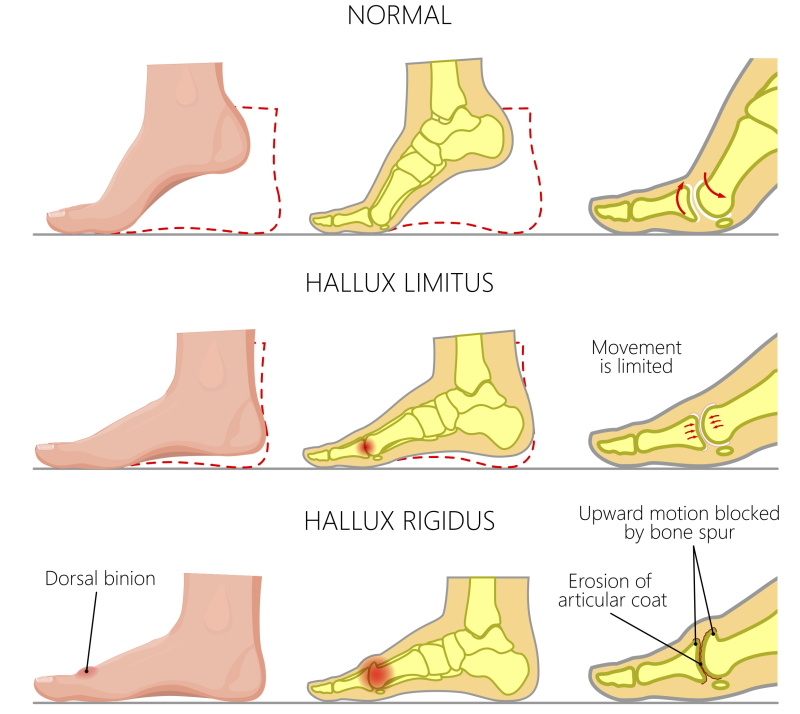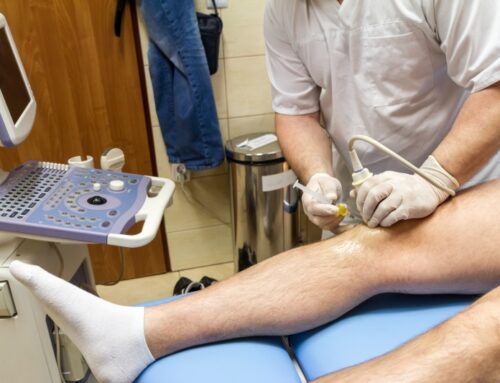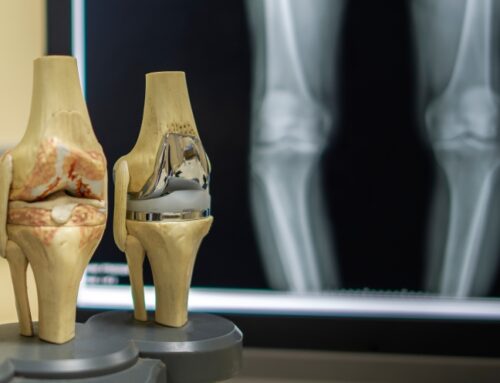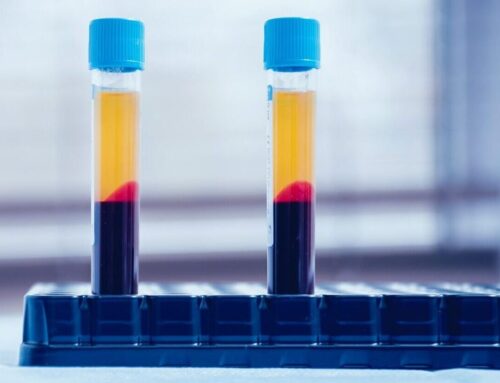Hallux rigidus is also known as big toe arthritis. It affects adults, usually between the ages of 30-50, and is typically the result of a previous injury from sport. Find out what hallux rigidus treatment is available.
Symptoms
Generally, most people present with pain at the base of the big toe. Often, sports such as running or football make the pain worse. Usually, wearing a stiff, supportive mid-foot shoe will improve symptoms. Other common symptoms include swelling at the base of the toe and a lump at the joint, also known as a bone spur.
Activities such as stairs, running and push-ups may be unbearable.
Usually, there is a history of an injury to the toe many years ago. This acute injury is often termed ‘turf’ toe.
Diagnosis of hallux rigidus

Generally, we diagnose hallux rigidus by clinical examination and imaging.
Usually, when examining the big toe arthritis, the ability to move the joint up and down is reduced compared to the other side. Also, tenderness is often located on the top of the joint rather than underneath. Therefore, other toe conditions such as sesamoiditis or gout must be ruled out.
Weight-bearing X-rays show reduced joint space and wearing away of the cartilage. Also, ultrasound or MRI can display the amount of cartilage loss and the extent of swelling and inflammation in the big toe arthritis.
Hallux limitus vs. rigidus: are they the same?

So, in general, yes. Hallux limitus refers to the stiffness of the big toe joint or turf toe. We think that hallux limitus will lead to hallux rigidus if symptoms are not treated properly.
Gout vs hallux rigidus
Gout is inflammatory arthritis caused by the build-up of uric acid crystals in joints. This build-up causes intense pain and inflammation. Overall, gout leads to episodes of severe pain and swelling followed by periods of few symptoms. In addition, these episodes are not usually affected by activity – unlike hallux rigidus.
Hallux rigidus treatment options
Generally, for hallux rigidus treatment, there are non-surgical or surgical options.
In a recent study of over 700 patients, 55% of patients were satisfied with conservative management.
Hallux Rigidus shoes and orthotics
The first step in treatment is to get your footwear right. Wearing a stiff-soled shoe means that the movement of the toe is limited. Also, wearing a rocker bottom orthotic helps the foot transition from heel to toe, giving more support to the toe.
In addition, reducing or limiting impact activity such as running and sport can help symptoms.
Taking ibuprofen tablets before and after provoking activity will help in the short term.
Physical therapy, including mobility exercises, strengthening of the foot muscles, and strengthening of the calf muscles and above, can reduce the loads on the big toe.
Finally, a cortisone shot for hallux rigidus can reduce pain and improve movement.
Do you need surgery for hallux rigidus?
We should only consider surgery after simple treatments.
Generally, there are two types of surgery for hallux rigidus. Firstly, a procedure called cheilectomy or shaving of the bone is a good option if there are sizeable bone spurs on the top of the joint. The problem with cheilectomy is that although we remove the spurs, the underlying arthritis is not treated, resulting in a return of the spurs. Secondly, arthrodesis or joint fusion is where we sacrifice the movement of the joint for reduced pain. This procedure is helpful for end-stage disease.
More about hallux rigidus treatment and a cortisone shot
Like other injections, a cortisone shot for hallux rigidius is more effective if we use it with other treatments such as physical therapy and orthotics. Cortisone is a potent anti-inflammatory and will reduce pain and swelling in an arthritis joint. However, the effect of cortisone only lasts for a few months (but sometimes longer). Also, repeated cortisone injections harm the cartilage and may accelerate arthritis.
We should perform a cortisone shot for hallux rigidus under ultrasound guidance. This means that the cortisone reaches the correct spot improving the effect.
Some doctors use other types of injections, particularly when they have tried a cortisone injection. Examples include hyaluronic acid or platelet-rich plasma. However, we don’t have evidence that these injections are effective. Nevertheless, some people benefit from a trial of these alternatives with a preference for gel or hyaluronic acid.
Final word from Sportdoctorlondon about hallux rigidus treatment
Generally, we see hallux rigidus in younger adults who have suffered a sports injury to their toe. Overall, we should try simple remedies first before considering injections or surgery.
Related conditions:








Leave A Comment